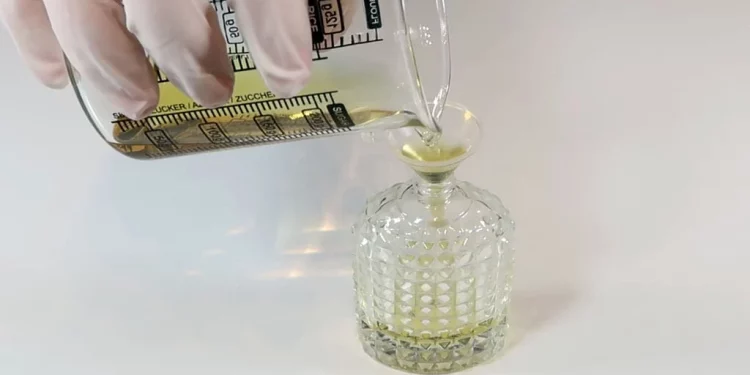Fragrance has always been an important part of human culture. Everyone wants to be told that they smell nice and humans will do anything to make that happen.
While commercial perfumes are readily available, creating your own signature scent can be a rewarding and creative endeavor. When you make your own perfume from scratch, it allows you to tailor the fragrance to your preferences, experiment with different ingredients, and express your unique personality.
In this beginner’s guide, we’ll explore the art of perfume making, from understanding fragrance notes to creating your own custom blend.
Table of Contents
Understanding Fragrance Notes
Perfumes are composed of three types of notes: top notes, middle notes (also known as heart notes), and base notes. Each note contributes to the overall scent profile and evolves over time as the perfume is worn.
Top Notes
Top notes are the initial impression of a perfume and are typically the first scents you smell when you apply the perfume. These notes are light, fresh, and fleeting, lasting for only a few minutes to an hour. Common top notes include citrus fruits, floral extracts, and herbal aromas.
Middle Notes (Heart Notes)
Middle notes emerge once the top notes dissipate and form the heart of the perfume. These notes are more robust and enduring with floral, fruity, or spicy accords, providing depth and complexity to the fragrance. Middle notes can last for several hours.
Base Notes
Base notes are the foundation of the perfume and emerge as the top and middle notes fade away. These notes are rich, warm, and long-lasting, anchoring the fragrance and giving it staying power. Base notes typically include woody, musky, or resinous aromas and can linger on the skin for hours or even days.
Gathering Ingredients and Supplies
Once you understand the basic principles of fragrance notes, you can begin gathering the ingredients and supplies needed to make your own perfume recipe. Here’s what you’ll need for basic perfume making.
Essential Oils
Essential oils are the building blocks of perfume and provide the fragrance and therapeutic properties. Choose a variety of essential oils to create a balanced blend of top, middle, and base notes. Popular essential oils for perfume-making include lavender, rose, bergamot, sandalwood, and patchouli.
Carrier Oil
Carrier oils are used to dilute essential oils and help disperse the fragrance evenly on the skin. Common carrier oils include jojoba oil, sweet almond oil, and fractionated coconut oil. Choose a carrier oil that is odorless and lightweight to allow the fragrance of the essential oils to shine through.
Perfumer’s Alcohol or Vodka
Perfumer’s alcohol or high-proof vodka is used as a solvent to blend the essential oils and carrier oil together. It helps the fragrance evaporate quickly and evenly when applied to the skin. Look for perfumer’s alcohol or high-proof vodka with at least 90% alcohol content for best results.
Glass Perfume Bottles
Glass perfume bottles are ideal for storing and dispensing homemade perfume. Choose bottles with tight-fitting lids to prevent evaporation and preserve the fragrance. You can find a variety of glass perfume bottles online or at specialty craft stores.
Creating Your Own Perfume Blend
Now that you have gathered your ingredients and supplies, it’s time to start your DIY project. Follow these steps to make your own fragrance blend from scratch.
Start with Base Notes
Begin by adding your chosen base notes to a clean glass perfume bottle. Base notes are the foundation of the perfume and should make up the largest portion of your blend. Experiment with different combinations of base notes until you find a balance that appeals to you.
Add Middle Notes
Next, add your selected middle notes to the perfume bottle, layering them on top of the base notes. Middle notes add complexity and character to the fragrance, creating depth and richness. Be mindful of the proportions of each middle note to ensure they complement the base notes harmoniously.
Incorporate Top Notes
Finish by adding your chosen top notes to the perfume bottle and carefully layering them on top of the base and middle notes. Top notes provide the initial impression of the perfume and should be added sparingly to avoid overwhelming the blend. Experiment with different combinations of top notes to achieve the desired scent profile.
Dilute with Carrier Oil
Once you have blended the essential oils to your liking, dilute the mixture with a carrier oil to create the final perfume blend. Add the carrier oil to the perfume bottle, using a pipette or dropper to measure the amount carefully. The carrier oil should make up the remaining portion of the perfume blend.
Test and Adjust
Once the perfume blend has matured, test it on your skin to assess the scent and longevity. Apply a small amount of perfume to pulse points such as the wrists, neck, and behind the ears, and allow it to dry naturally. Take note of how the perfume evolves over time and make any adjustments to the blend as needed.
Bottle and Label
Once you are satisfied with the homemade perfume blend, transfer it to a clean glass perfume bottle and label it with the name of the blend and the date of creation. Use exotic names like Bianco Latte Giardini Di Toscana.
Store the perfume bottle in a cool, dark place away from direct sunlight to preserve the fragrance.
If you like the perfume, you can make a similar one again. But it’s better to experiment with different mixtures of essential oils and try out different ‘flavors’ so to speak. You should match your perfume to your mood of the day.
Make Your Own Perfume At Home
In the past, we had a huge culture of making things at home. But nowadays, everyone just goes online or to a store and purchases whatever they need.
This doesn’t mean that you can’t make your own perfume at home, with a recipe that appeals to you.
We have many interesting articles on our website that will appeal to your DIY nature, so please check them out and keep learning.


 Home
Home










